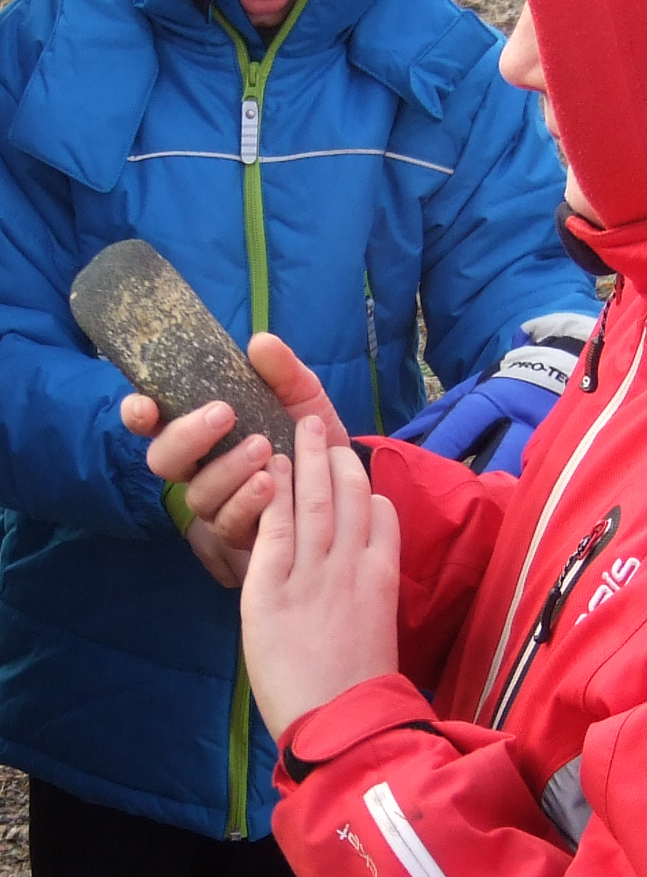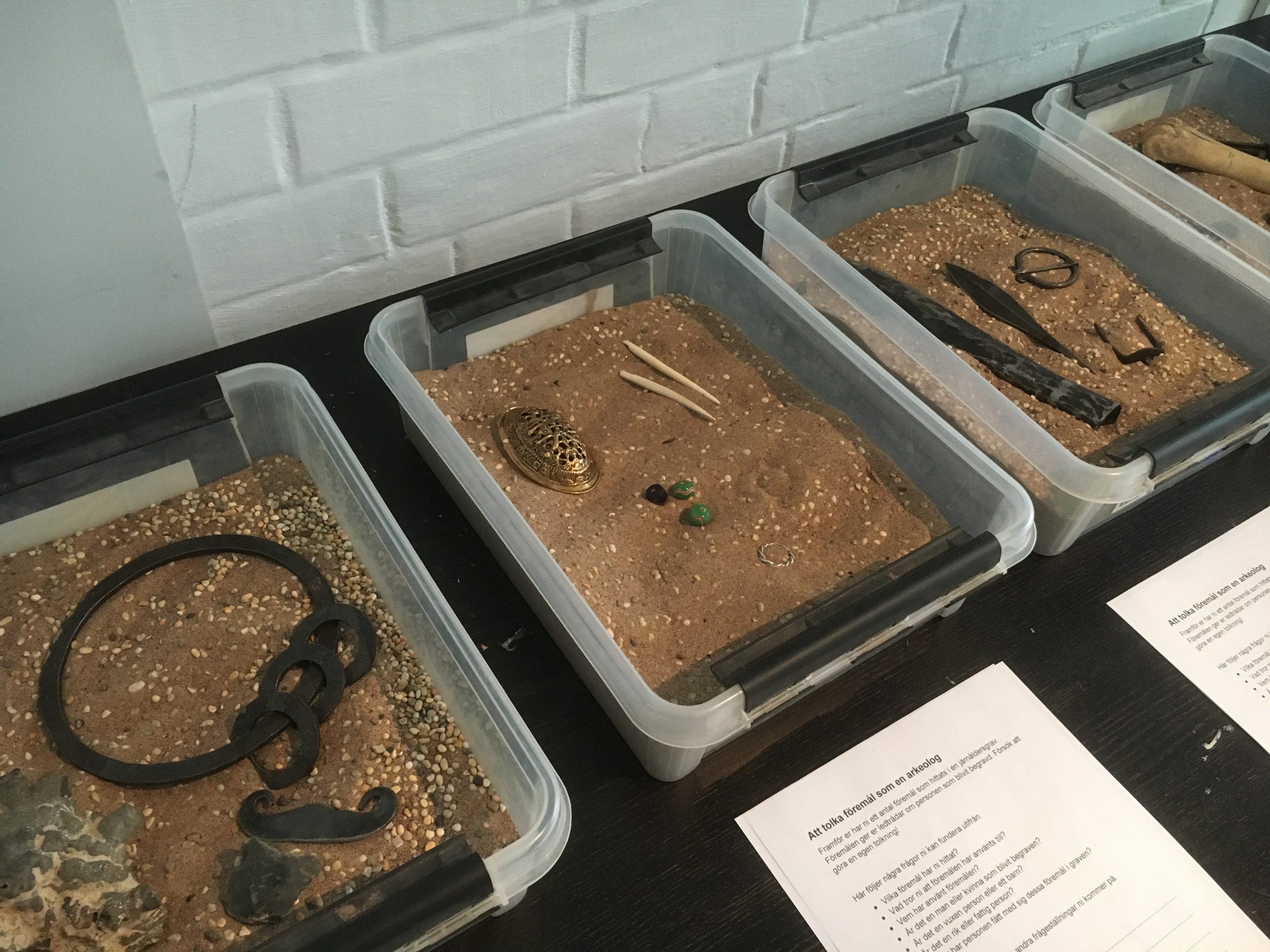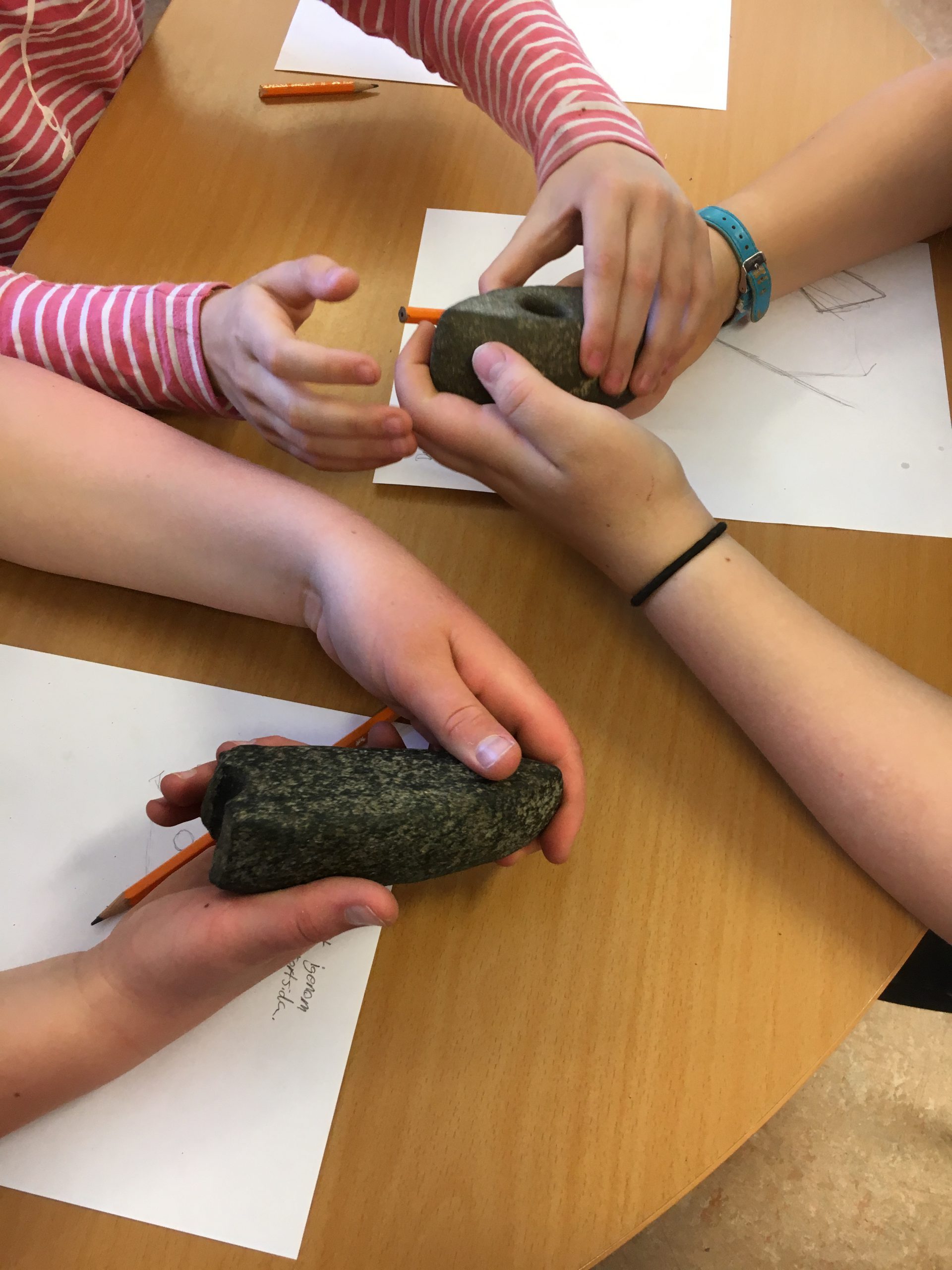Beskrivning av programmet
I skolprogrammet Känn på historien får eleverna lära sig mer om arkeologi som metod och källa till kunskap samt om de förutsättningar människorna som levde under forntiden hade och hur de nyttjade de resurser de hade att tillgå i närområdet.
Tillsammans med en arkeolog / pedagog från Dalarnas museum pratar vi om saker som:
- Vad arbetar en arkeolog med?
- Hur man utifrån ett arkeologiskt källmaterial kan ställa frågor till materialet och lära sig om forntiden och på så sätt få kunskap om de människor som levde i Dalarna för flera tusen år sedan.
- Vad bevaras i marken och vad bevaras inte?
- Om vikten av att vara källkritisk gentemot det material man ska tolka.
- Vad man ska göra om man hittar något riktigt gammalt?
- Om tidslinjer och olika perspektiv på tid
Programmet genomförs i museets verkstad eller i klassrummet på skolan. Med hjälp av ett rikt rekvisitamaterial får eleverna känna och klämma på arkeologiska föremål (eller kopior av arkeologiska föremål) och lära sig hur arkeologer genom ett fysiskt föremål kan tolka en händelse i historien. Eleverna kommer även få se bilder och korta filmsnuttar för att lära sig mer om arkeologisk metod och källkritik.
Beroende på klassens storlek jobbar eleverna med detta i grupper om 2-4 personer per grupp.
Avslutningsvis får eleverna redovisa för varandra hur de tänkt och tolkat kring de föremål eleverna jobbat specifikt med inom gruppen.
Programmet kan fokuseras på en särskild tidsperiod, om så önskas (stenålder – medeltid).
Målgrupp
Vi rekommenderar programmet primärt till årskurs 3-6, men innehållet går att anpassa så att det även lämpar sig för F-klass upp till årskurs 9.
Bokning
Skicka din bokningsförfrågan till bokning@dalarnasmuseum.se
Kostnad
980 kr / skolklass
Programmet kan även genomföras på plats i skolan. Vid dessa tillfällen tillkommer en km-ersättning på 3,65 kr / km.
Förmågor som tränas
- kunskaper om händelser, aktörer och förändringsprocesser under olika tidsperioder samt om historiska begrepp och långa historiska linjer,
- förmåga att ställa frågor till historiska källor samt att tolka, kritiskt granska och värdera dessa, och
- förmåga att reflektera över hur historia kan brukas i olika sammanhang och för olika syften.
Koppling till Lgr 22
Historia (samhällsorienterande ämnen)
Årskurs 1-3
Att leva tillsammans
- Samtal om och reflektion över moraliska frågor och livsfrågor med betydelse för eleven, till exempel kamratskap, könsroller och döden.
Att leva i närområdet
- Några utmärkande drag i närområdets natur- och kulturlandskap. Spår av den senaste istiden.
- Hemortens historia och vad närområdets platser, byggnader och vardagliga föremål kan berätta om livet där under olika tider.
Att leva i världen
- Rumsliga förutsättningar i natur och miljö för befolkning och bebyggelse, till exempel mark, vatten och klimat.
- Människans uppkomst, vandringar, samlande och jakt samt förändrade levnadsvillkor i samband med övergången till jordbruk.
- Norden befolkas. Människors levnadsvillkor under nordisk stenålder, bronsålder och järnålder.
- Berättelser i antik och nordisk mytologi samt i samisk religion.
Att undersöka verkligheten
- Metoder för att söka information, till exempel textläsning, intervjuer och observationer. Samtal om olika källors användbarhet och tillförlitlighet.
- Mentala kartor, till exempel över närområdet, skolvägar eller andra platser som är betydelsefulla för eleven.
- Tidslinjer och tidsbegreppen dåtid, nutid och framtid.
Årskurs 4-6
Kulturmöten och statsbildning i Norden, cirka 800–1500
- Nordens kulturmöten med andra delar av världen genom vikingars resor och medeltidens handelssystem.
- Statsbildning och kristendomens etablerande i Norden samt konsekvenser av dessa förändringar.
- Likheter och skillnader i levnadsvillkor för barn, kvinnor och män under tidsperioden.
- Vad historiska källor är, till exempel arkeologiska fynd, texter, muntliga berättelser och digitalt material, och hur de kan användas för att ge kunskaper om det förflutna.
- Historiebruk kopplat till tidsperioden, till exempel hur vikingar framställs i populärkulturen.
Maktförhållanden och levnadsvillkor i Norden, cirka 1500–1800
- Vad historiska källor från tidsperioden, till exempel brev, dagböcker och kartor, kan berätta om det förflutna.
- Historiebruk kopplat till tidsperioden, till exempel i gatunamn, minnesmärken och reklam.
Årskurs 7-9
Samhällsomvandlingar: framväxten av civilisationer och industrisamhällen
- Tolkning av historiska källor från någon tidsperiod och granskning utifrån källkritiska kriterier. Värdering av källornas relevans utifrån historiska frågor.
- Analys av historiebruk kopplat till någon tidsperiod, till exempel hur olika aktörer använder historia för att skapa eller stärka nationella identiteter.
Geografi
- Metoder – Fältstudier för att undersöka natur- och kulturlandskap.
Naturorienterande ämnen
Material och ämnen
- Hur material kan sorteras efter några egenskaper, till exempel utseende, om de är magnetiska och om de flyter eller sjunker i vatten. Hur materialen kan återvinnas.
Svenska
- Förmåga att söka information från olika källor och värdera dessa…
- Muntliga presentationer och muntligt berättande. Föremål, bilder, digitala medier och verktyg samt andra hjälpmedel som kan stödja presentationer.







